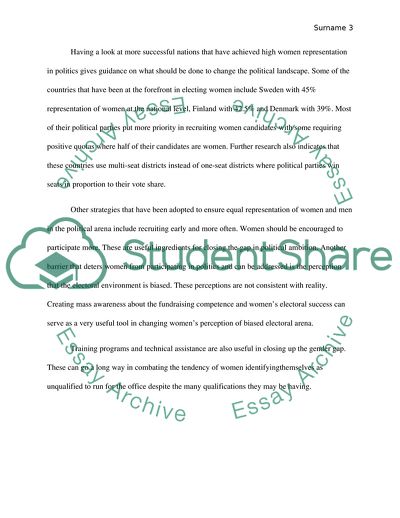Cite this document
(Women Voting Turnout and Their Representation in Politics of the USA Research Proposal Example | Topics and Well Written Essays - 3750 words - 1, n.d.)
Women Voting Turnout and Their Representation in Politics of the USA Research Proposal Example | Topics and Well Written Essays - 3750 words - 1. https://studentshare.org/politics/1847395-politics
Women Voting Turnout and Their Representation in Politics of the USA Research Proposal Example | Topics and Well Written Essays - 3750 words - 1. https://studentshare.org/politics/1847395-politics
(Women Voting Turnout and Their Representation in Politics of the USA Research Proposal Example | Topics and Well Written Essays - 3750 Words - 1)
Women Voting Turnout and Their Representation in Politics of the USA Research Proposal Example | Topics and Well Written Essays - 3750 Words - 1. https://studentshare.org/politics/1847395-politics.
Women Voting Turnout and Their Representation in Politics of the USA Research Proposal Example | Topics and Well Written Essays - 3750 Words - 1. https://studentshare.org/politics/1847395-politics.
“Women Voting Turnout and Their Representation in Politics of the USA Research Proposal Example | Topics and Well Written Essays - 3750 Words - 1”. https://studentshare.org/politics/1847395-politics.


